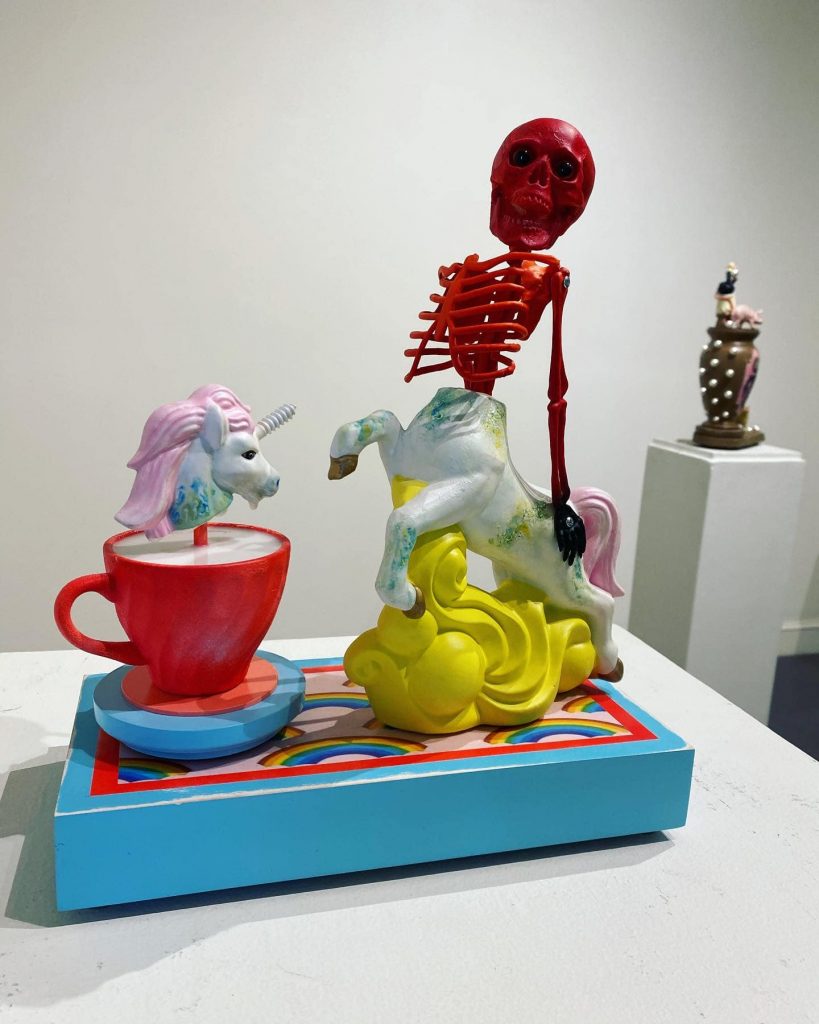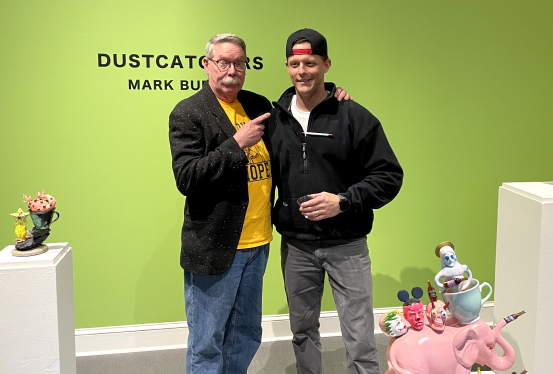

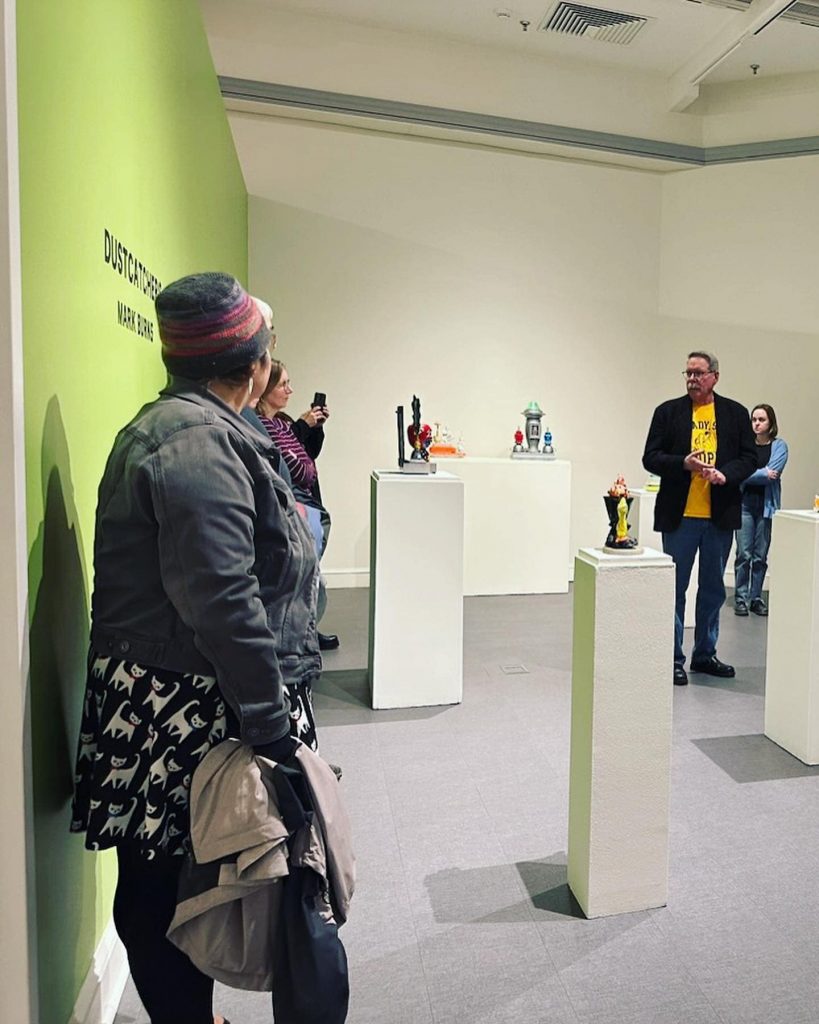


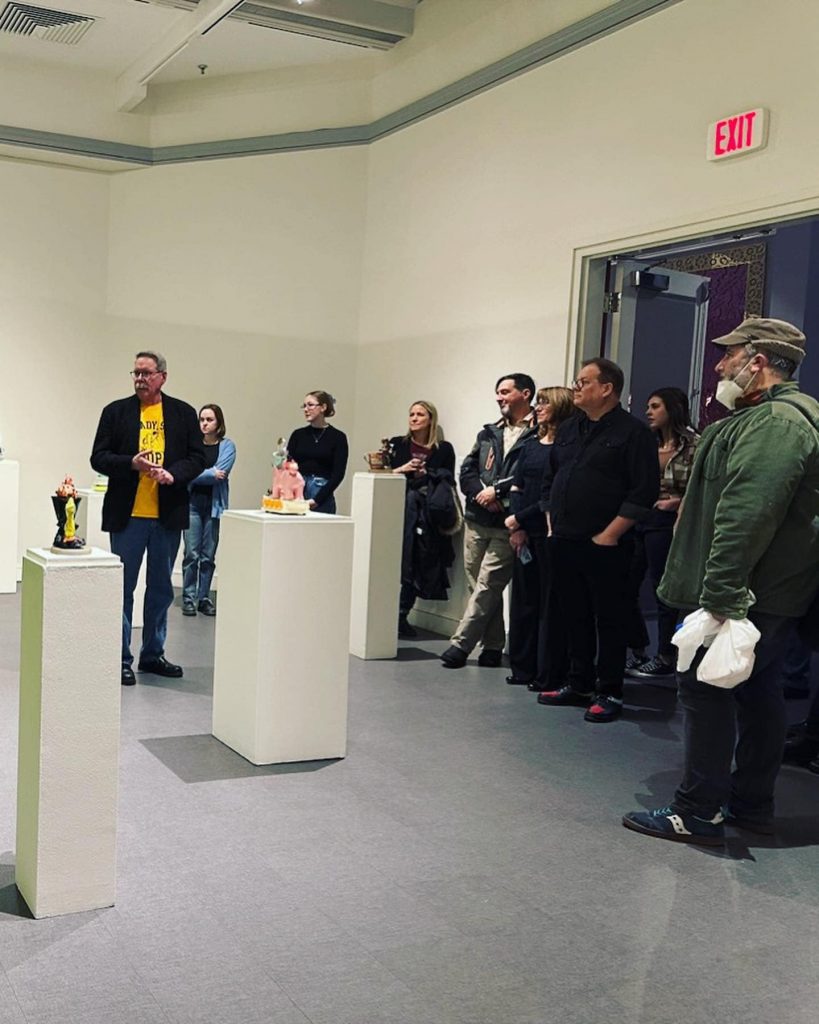

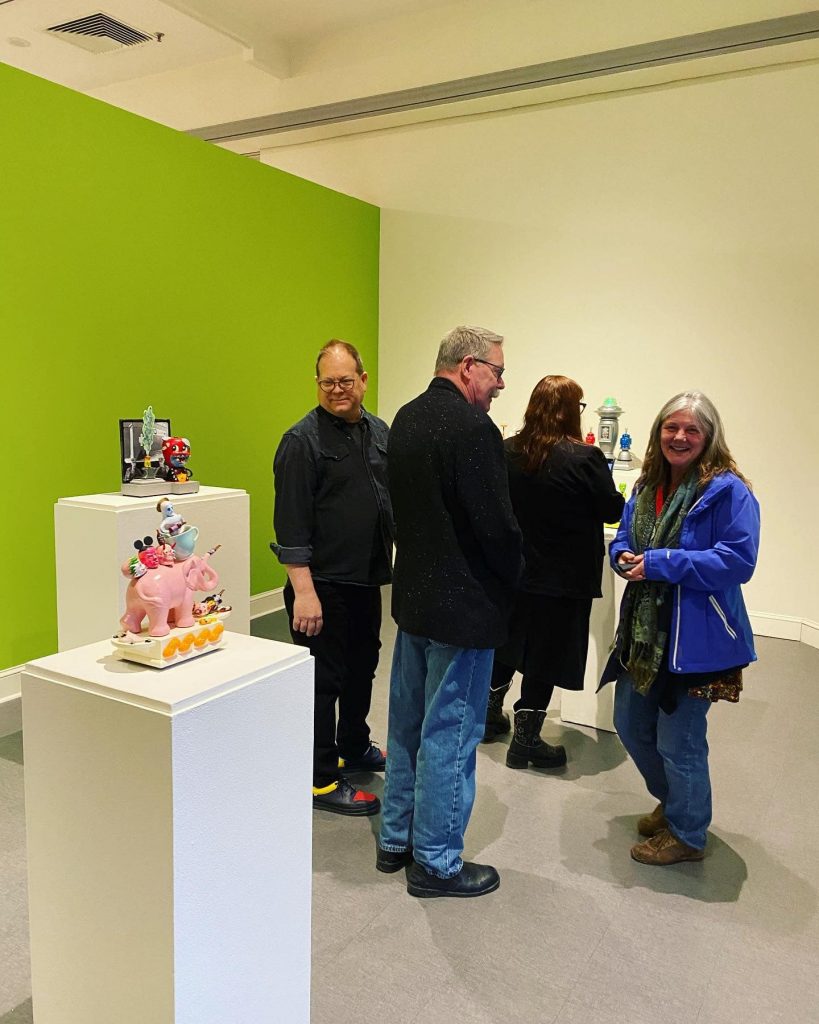
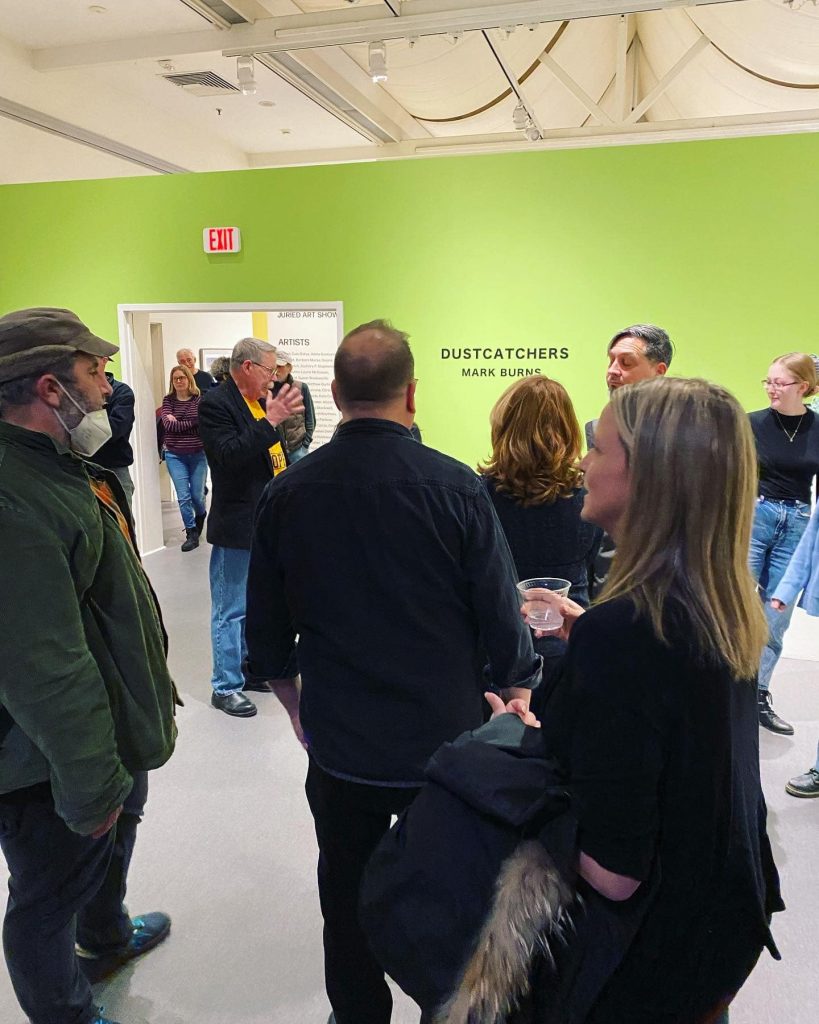
“Dustcatchers”
An essay by Bruce Metcalf
Contemplating a Mark Burns sculpture is like eating one of those Viennese layer cakes: here some scrumptious cake, there a thick glob of frosting, below that a wad of whipped cream, all with something crunchy on the bottom. Burns is similarly complex and layered, full of references and autobiography and humor and asides. One might be tempted to dismiss his work as a simple visual joke, but that would be a grave disservice to the work. There’s a lot going on here.
Where do I start? To begin, every one of his new “Dustcatchers” is a cup on a base. The cup is a nod to ceramics history, and sites the work within an historic continuum. The cup establishes his bona fides as a serious clay practitioner. However, the base distances the cup from function, and warns you that this is no longer the realm of earnest utility. Nobody is going to drink coffee from these objects.
Then, there’s a constant reference to mid-century Americana. Not the lofty regions of high art, but the funky and wildly imaginative stuff of mass-produced kitsch. There’s a sense that you have entered some cockeyed flea market, with booth after booth of amateur china painting, novelties, movie posters, monsters, kinky leather goods, and who knows what else. In a field that that often trades in cultural appropriation, Burns stays at home. Abroad, Burns is recognized as profoundly American, adamantly native to his own country. Back in the USA, I suspect he’s more of a puzzle.
As with any artist who engages the low, there is a measure of ambivalence here. On one hand, Burns celebrates the prodigious energy of American bad taste. He has published a book on mid-century Americana, and is quite an authority on the subject. Truthfully, he takes kitsch seriously, affording it a dignity that it is often denied. On the other hand, all that stuff becomes the vehicle for jokes and off-color remarks.
Any student of art history knows that the mixing of high and low is serious business. Painters traded in caricature since the 18th century, and the very beginnings of painterly abstraction can be traced to the moment that Picasso glued some wallpaper onto one of his early collages. Burns merely continues that tradition, within his own sensibility.
There’s the element of Burns being gay, too. Burns’ teacher and mentor was Howard Kottler, the grandfather of American queer ceramics. There were gay ceramists before, like Michael Cardew, but Kottler was among the first to employ coded imagery to telegraph his sexuality. Gays at the time were compelled to remain closeted, because a frank admission of queerness could result in getting fired and being shunned by one’s peers. Burns himself attracted exactly that kind of rejection from some of the faculty at the University of the Arts, when he was fired in 1979. So he knows why a gay artist might speak in code. After losing his job, Burns moved his focus away from gay imagery for a while. He wanted to earn his chops as an artist first, before being perceived as a gay artist. Luckily, as social attitudes changed, he returned to being out, loud & proud with a vengeance.
Craft comes into play. Burns is truly a master craftsman, a brilliant modeler and moldmaker, but also capable of handling any clay body or technique. I have heard it said that ceramists are all about one of three things: the clay form, the glaze, or firing. But Burns is a generalist. And not just that, but rather skeptic of the way that craftsmanship can be fetishized. Much of his work is not glazed at all, but painted. Ceramic purists will be offended, but that would miss the point entirely.
All Burn’s work is exquisitely crafted. Every aspect is under control. There’s no expressionist gesture here, not a single trace of Peter Voulkos and his macho manhandling of clay. Instead, it’s all about control.
These particular sculptures are composites of figures that Burns made during his residence at Harvard University and found objects that he scrounged from various thrift stores. Strictly speaking, his sculptures are collages. But they are very polished collages, with every hair neatly in place. As Burns says, “I like things that are neat and clean.”
I see all that high craft as a form of theater, or perhaps camouflage. If you think of Burns’ work as highly emotional – which I do – then perhaps the craft is a way of masking the emotion. It’s a kind of reticence, a strategy of misdirection, a refusal to draw attention to the self. Instead of foregrounding his feeling, he diverts attention away with his craftsmanship.
Why would he do that?
The answer is at the very bottom of the Viennese cake that is Mark Burns’ work. Emotion, as I just said. I believe those emotions are principally loss and grief. You might not think these sunny confections could be tragic, but they are. Burns had taken his share of hard knocks, and the sculptures in “Dustcatchers” stand as a record of his sorrows. “Big Apple Daddy,” despite its ludicrous image of a bearded “fruit,” is also a memorial to the pre-AIDS days of unencumbered sex at an old New York cruise bar, the Anvil, complete with a fever dream of long-dead gay porn stars. Burns adds two self-portraits to the piece, to remind us that he was both witness and participant. There is an elegiac tone to the piece, a sense of fond remembrance and regret that those days and those places are gone forever.
Or take “The DTs,” with its pink elephant and comic pile of pink elephant poop. Personally, I think the drunken clown, with his beer-bottle phallus and happy grin, is hilarious. The sheer absurdity of the thing makes me smile. But the sculpture is also a something of a portrait of his alcoholic uncle. And anybody who had to deal with an alcoholic in the family knows such stories rarely have happy endings. Or “Usurping the Unicorn,” with its half unicorn and half death. It’s functionally a Memento Mori, cautioning every man – gay or otherwise – that someday the fun will be over. Or maybe that the fun already is over, and we just haven’t gotten the news yet. I know this piece is born of bitter personal experience. The wrapper is pretty, but the contents not so much.
As with any art worth looking at, it can take some time to dig down through all the layers. You must stop and think. You are asked to get beyond the satire and the cartoony humor. You are asked to see through the images and consider what they might mean. And if you do take the time, if you peel away the layers one by one, Mark Burns’ sculpture will offer ample rewards. I promise you.

